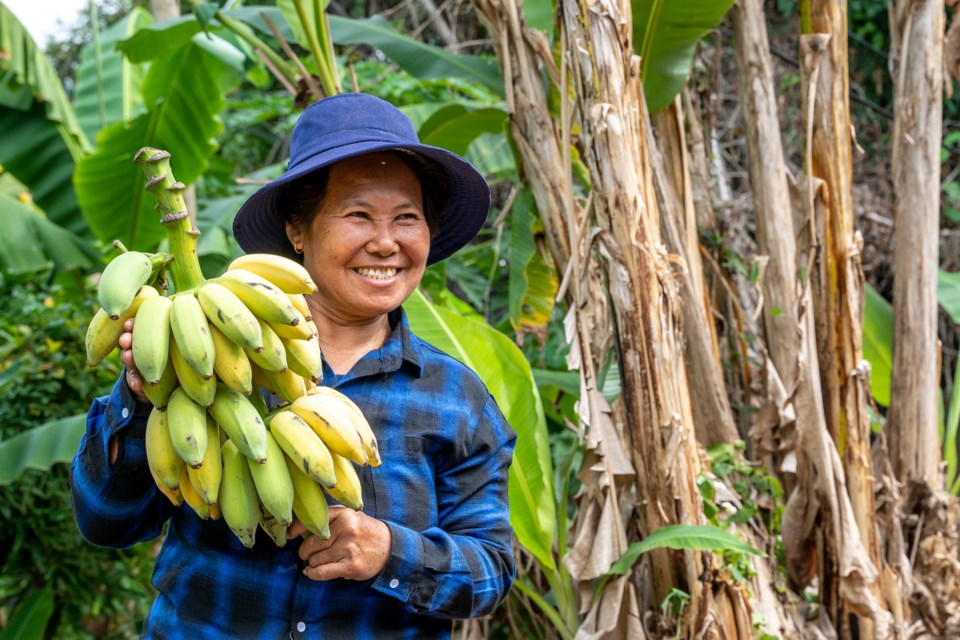Happiness is fleeting. Aim for fulfilment, advised "The Optimist" push email from The Washington Post in my inbox the other day. Huh. But I think I might have stumbled onto a dessert that delivers both—in spades.
It all sprang from an article from another trusted publication I've subscribed to for ages. (What else would you expect from an old journo?) New Scientist—one of the top science and technology magazines in the world, published in London since 1956 and still one of the best literal take-aways I took away from a science journalism conference I attended in that city 100 years ago—recently ran a feature on the work of David Good.
David's mom is Yanomami—Indigenous people who live in remote areas of the Amazon rainforest and still rely on hunter-gathering and small farms for their traditional diet. Back in the hippie glory days of the 1970s, the Yanomami were a source of endless fascination for ethnobotanists, mystics, shamans and other "seekers," especially for their use of psychoactive drugs, including psilocybin mushrooms. Now they're sought out for having the healthiest, most diverse gut microbiomes in the world. How times change.
It's a fascinating article, one alone worth subscribing to New Scientist, which might even get you hooked. Think of it as a gateway thing. But to get you through the tale in a nutshell, David's mom, Yarima, is a member of the Irokai-teri community in the Venezuelan part of the Amazon rainforest. In the ’70s, his dad—who's from the U.S., where David grew up—travelled to the Amazon to learn about the Yanomami's protein intake.
What was supposed to be a research program for 15 months turned into 12 years. David's dad fell in love with his mom as well as the Yanomami way of life—not an easy life, but a happy and stress-free one where everyone works together to find food in a way that's social and fun. Sounds like living in a hippie communal house in Kitsilano or Soo Valley to me, or at least an antidote to today's stressed-out, black mirror world.
According to the article, David's family moved to the U.S., but eventually Yarima chose to return home. After "a life-changing reunion" with his mom in the Amazon, David is now doing a PhD in microbiology at the University of Guelph—home to one of the top food science departments in the world, certainly No. 1 in Canada, and a reliable source for many a food column I've written over the years, including one on food activist Anita Stewart, who started the annual Food Day Canada coming up August 5.
More on that later, but back to David Good, whose research involves studying the Yanomami’s outstanding microbiomes—the bacteria, viruses and fungi that live on and in our bodies. His goal: Develop new therapies for microbiome-associated conditions.
These days, the health of our gut microbiomes is proving as fascinating as psilocybin was in the ’70s. Body weight, brain health (including memory function and your risk for Alzheimer's disease), the way we digest fibre, the way babies digest breast milk—more and more, health issues like these are being connected to our gut microbiomes.
Of greatest interest to David are illnesses with an inflammatory component, like allergies, obesity, diabetes, cancer, Crohn's and inflammatory bowel disease—all of which seldom or never occur in the Yanomami, with their much more diverse microbiomes.
In industrialized countries we eat oodles of processed foods containing simple carbs like the sugars and refined starches (sometimes called empty calories) found in sweets, white bread and rice, and the like. These foods are mainly absorbed in the small intestine.
But the Yanomami eat a hugely diverse diet, including everything from spiders to boa constrictors (reportedly good), but especially food that contains lots of fibre and resistant starches, a term familiar to diabetics and one more and more people are learning about. These starches resist digestion in your small intestine, then ferment in the large intestine, where they feed the "good" bacteria in your gut and produce beneficial metabolites that help reduce inflammation. Several studies have shown they can also help you lose weight.
One of the main foods they eat with lots of fibre and resistant starches? You guessed it—plantains. Those, along with cassava, are at the heart of the Yanomami diet, which has barely changed for maybe a thousand years.
Yes, lots of foods have resistant starches, like raw oats rather than cereal; beans, peas and lentils versus pasta or white rice; and greener bananas instead of ripe ones. But I figure we humans are weak creatures, and the one area where we usually cave in is dessert.
Enter the mighty plantain, often seen in grocery stores but usually overlooked unless you're from a tropical or semi-tropical region. Search the web and you'll find lots of tips, from boiling green ones to making crackers or mofongo. But for a super quick, super tasty dessert that can actually help your gut, lots of online cooks can show you how to bake or gently fry plantain slices to make a delicious treat in minutes.
The trick is the greener and less ripe the plantain, the better it is for you. For dessert, most online cooks suggest leaving plantains until they're black, but that's when more of the resistant starches have changed to regular starch. So play around. Greener plantains are more savoury; greenish yellow or yellow/black ones are sweet enough.
After a nice little serving for your next dessert, I promise—you'll feel happy and fulfilled, and full. Your gut, your waistline and your brain will thank you.
Glenda Bartosh is an award-winning journalist who’s always preferred her bananas on the green side.




